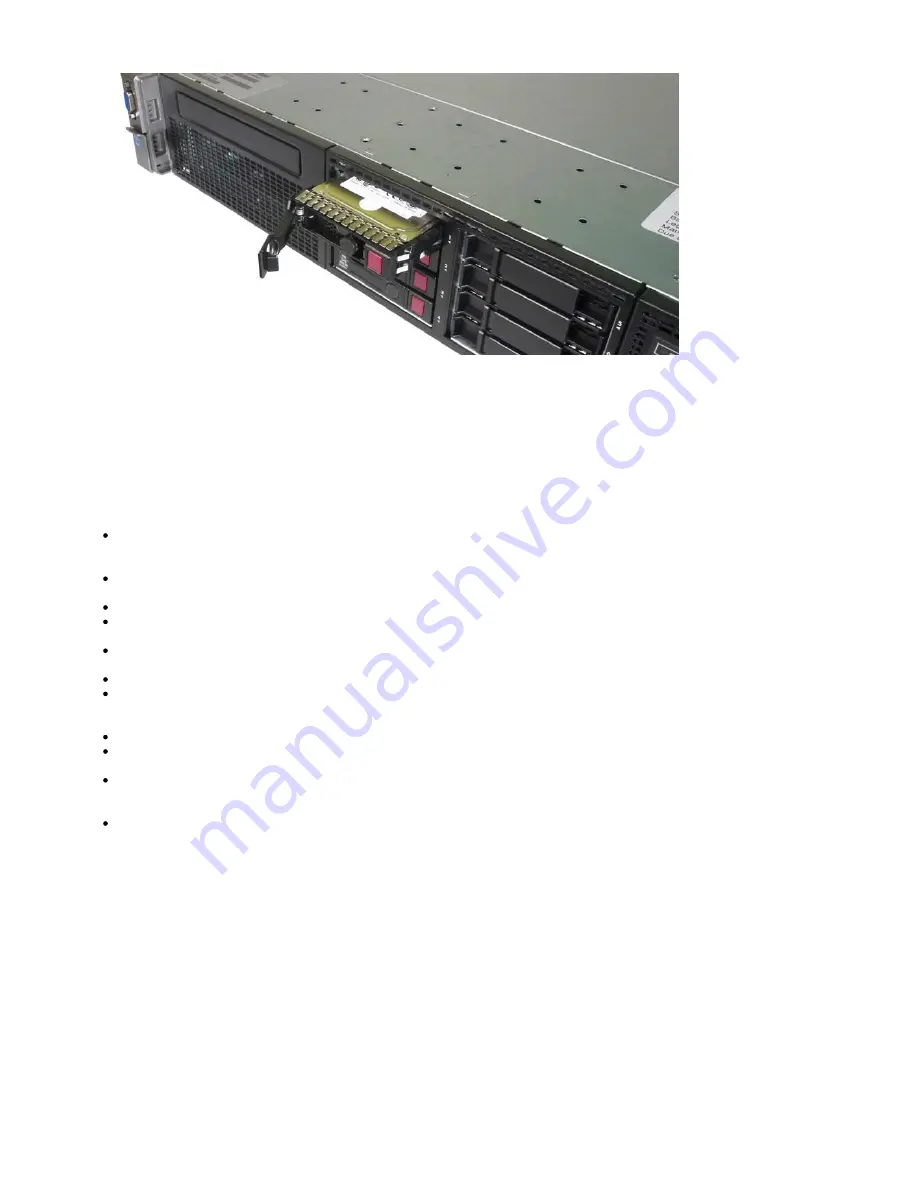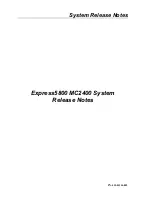
Copyright ©2018, Infoblox, Inc.All right reserved.
1.
2.
3.
4.
Wait about 30 seconds for the disk to completely stop spinning.
Remove the disk, extract it from its carrier and handle it with care. Do not drop the disk or ship it loosely in a carton.
Securely mount the replacement disk in the drive carrier and replace the carrier in the system.
Infoblox 4000 Series Disk Array Guidelines
Infoblox designs the disk array to be completely self managed. No maintenance procedures are required for a normally functioning disk array.
Mishandling the disk array may cause an unrecoverable error and result in a failed appliance. Infoblox recommends that you observe the following
guidelines:
Remove only one disk at a time. Do not remove two or more disks from the appliance at the same time. Removing two or more disks at
the same time may result in an appliance failure and require an RMA of the appliance. This rule applies to both powered and
powered-down appliances.
If you inadvertently remove the wrong disk drive, do not then immediately remove the disk drive that you originally intended to remove.
Verify the status of the array and replace the disk drive that you initially removed before removing another drive.
If the status of the array is degraded, remove the failed or failing disk drive only. Do not remove an optimally functioning drive.
If your acceptance procedure requires a test of the RAID hot-swap feature, remove only one disk drive at a time. You can remove a
second disk only after you replace the first disk and the array completes its rebuilding process.
Do not remove a disk drive while the array is rebuilding. This may result in an appliance failure. Verify the status of the array before
removing a disk drive.
You can hot-swap a drive while the appliance remains in production.
Some conditions may require powering down the appliance to replace a failed unit. This normally happens if the RAID controller detects
an error that could damage the array. If you insert a replacement drive into a live array and the controller doesn't recognize the drive,
power down the appliance.
All disks in the RAID array must have the same disk type for the array to function properly.
In the unlikely event that two disk drives fail simultaneously and the appliance is still operational, remove and replace the failed disk
drives one at a time.
Rebuild time can vary. The rebuild process takes approximately two hours on an idle appliance. On very busy appliances (over 90%
utilization), the disk rebuild process can take as long as 40 hours. On a Grid Master serving a very large Grid, expect the rebuild process
to take at least 24 hours.
Replace a failed or mismatched disk only with a replacement disk shipped from Infoblox. When you request a replacement disk, report
the disk type displayed in the Detailed Status panel of the Grid Manager or the Infoblox part number on the disk.
Notes on Disk Replacement
NIOS saves and restores IP settings and basic network configurations, such as the gateway address, netmask, Grid secret and Grid name, when
you replace a failed disk drive. The replaceable hard disk contains only user data.
Should the hard disk drive in an appliance stop working for any reason, and the appliance is part of an HA pair, it will come offline and its HA
partner system will come online. If the hard disk has an issue and is replaced, the NIOS within the downed system detects the new hard disk and
initializes it for NIOS usage.
If the appliance is running in an Infoblox Grid, the system then communicates with the current Grid Master, downloads any remaining
configuration, and then automatically rejoins the Grid. In most cases, recovery within an HA pair and in the Grid takes only a few minutes after the
hard disk is replaced.
If the appliance runs in stand-alone mode without failover, a backup of the user data must be restored or the system configured from scratch.
Infoblox recommends regular backups of standalone appliance data. For more information, refer to
Backing Up and Restoring Configuration Files
topic in the
for your system.
Infoblox NIOS Administrator Guide






































